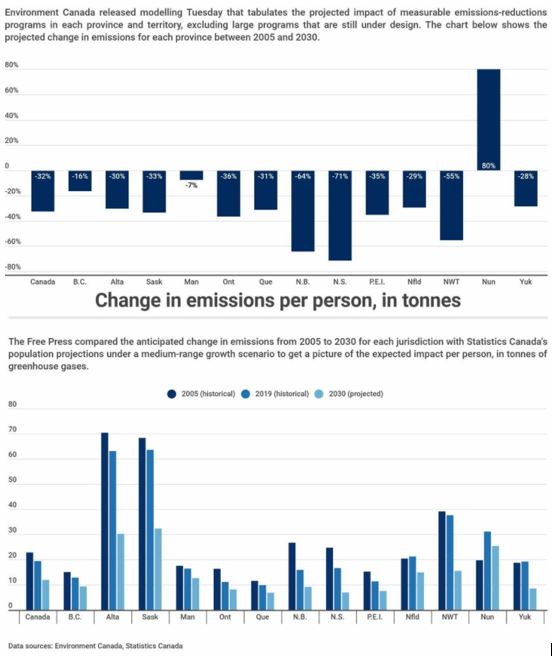OTTAWA — Environment Canada is predicting Manitoba’s fall from climate champion to one of the country’s also-rans by 2030.
According to one of two models the federal department developed as part of the emissions-reductions plan the Liberals tabled Tuesday in Parliament, Manitoba is set for a reduction of just seven per cent of its emissions under planned, clearly measurable interventions from 2005 to 2030.
Ottawa projects a 32 per cent drop nationally in the same time frame.
That so-called "bottom-up" model looks at existing provincial climate measures. The other "back-casting model estimates the impact of policies that are still under development, such as subsidies for green products and building retrofits but does not include provincial projections.
In a media briefing, officials said Manitoba’s reliance on hydroelectricity even back in 2005 means it had less room to drop by 2030, a period in which other provinces are switching to greener sources of electricity.
Advocates argue it also reflects limited action on emissions that Manitoba has planned for the rest of this decade.
Federal officials said the data could be correlated with Statistics Canada population projections, to see get a sense of per capita emissions.
A Free Press analysis suggests the average Manitoban’s emissions could amount to 12.6 tonnes per year by 2030. That would move the keystone province from having below-average emissions per capita in both 2005 and 2019, to being slightly worse than a national average of 11.9 tonnes per person.
Manitoba would go from the eighth out of 13 for emissions per person in 2005, to the fifth most-polluting in 2030.
The advocacy group Climate Action Team of Manitoba says the federal data reflects more promised climate action by Quebec and British Columbia, which are the other two large provinces with a majority share of their electricity coming from hydro.
"It’s reflective of the level of effort and planning that the provincial government has undertaken so far," said Curt Hull, an engineer who oversees the group’s own climate plan.
We’re below the national average on per capita emissions. But the powers that be have used that as an excuse to not really take the action that’s necessary.
The Progressive Conservative government insists Manitoba will play a key role in Canada’s climate pledges at the Paris and Glasgow summits, citing existing programs to reduce emissions in trucking, and looming plans for greener agriculture and carbon sequestration.
The province’s submission for Tuesday’s plan noted an energy policy review announced in February, and argues hydroelectricity exports are helping reach national goals.
Manitoba is well-positioned to contribute to Canada’s target of a net-zero-emissions grid by 2035.
Yet a year ago, Hull’s group called on Manitoba to drastically drop its own carbon emissions by switching vehicles and home heating off of gas and toward electricity. The group argued those are more realistic and impactful changes than actions such as overhauling agriculture.
The group said in order to do that, Manitoba would need to direct its massive hydroelectricity capacity internally, to get people charging electric cars instead of sending power outside the province.
Manitoba Hydro in 2018 had estimated how much energy would be needed to make that shift, which Hull said could be fulfilled by keeping hydro within the province instead of building more dams or a nuclear plant.
The province would also need to speed up efforts to update its relatively outdated building codes, and retrofit buildings to create better insulation and regional geothermal systems.
"Virtually every building in this province will have to become more efficient, and so that’s the most expensive and disruptive," he said, arguing that initiative would require a Crown corporation to administer those retrofits.
dylan.robertson@freepress.mb.ca
